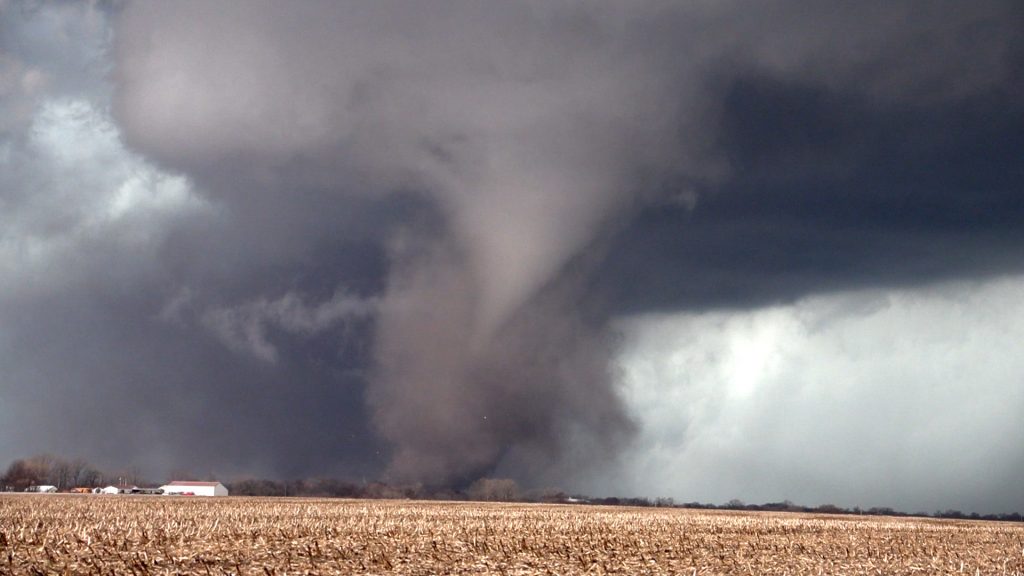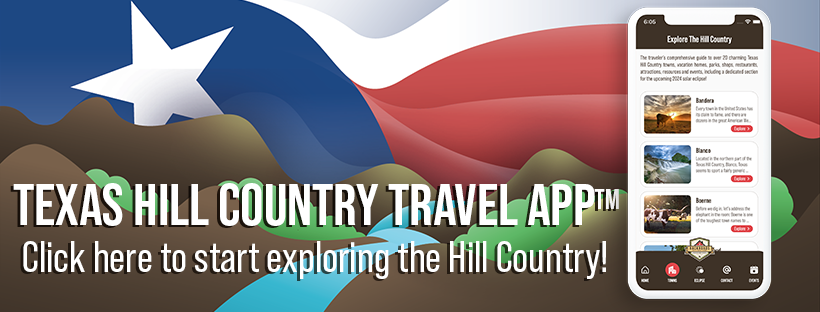How Likely is a Hill Country Twister?

Visitors from out of state ask us on occasion about the likelihood of tornadoes occurring here. It’s a good question, and we’d like to address it here.
Let’s get to the bad news first: One of the worst tornadoes in Texas history caused severe damage in the western Hill Country. The evening of April 12, 1927, a tornado touched down northwest of Rocksprings, which is about 80 miles west of Kerrville as the crow flies.
By the time it reached Rocksprings it was a wedge-shaped monster a mile wide (wedge tornadoes tend to be a “multiple vortex” system, rather than a single funnel, and their debris cloud takes on a wedge appearance). The winds in this tornado were near 300 miles per hour; it was later classified an F5 level storm. (Fujita scale designations can’t be made until damage is studied afterward). The tornado scrubbed Rocksprings off the face of the earth, destroying 90% of the town’s buildings. Warning systems were almost nonexistent in 1927, and sadly 74 were killed, and over 200 injured. The twister continued for at least 35 miles toward Leakey before it dissipated.
As horrible as that story is, there is good news. First, that was a freak storm; even where common, tornadoes of that intensity are rare. Second, the Hill Country is less likely to have tornadoes than other parts of Texas. Our region has the same odds of tornadoes as the rest of the continental US outside the boundaries of “Tornado Alley.”
North central Texas is in Tornado Alley, roughly from Austin northward through the panhandle. Its inverted L-shaped swath continues northward to Nebraska, then eastward to western Ohio. We use “roughly” because there are no definitive borders of Tornado Alley, and as more data comes in, those boundaries can shift. However, the Hill Country is NOT in Tornado Alley.
However, we recommend visitors be weather-aware here, especially between mid-March and June, when severe conditions are more likely. “Rare” doesn’t mean “never,” and it’s wise to be prepared.
We highly recommend having a weather app on your smartphone. These apps include features that alert you when conditions are favorable for severe weather nearby. Tornado detection and warning methods are improving, but you need to be tapped into the information stream. If severe weather looks possible, make sure your phone is fully charged ahead of time.
Know where to go during a tornado warning. Basements are rare in Texas, but modern structures have tornado “safe rooms” with specially reinforced walls. Get to an interior room on a lower floor with no windows, and cover yourself with a mattress or cushions to protect against debris.
Avoid travel of any kind if severe weather looks imminent. If you’re driving and can realistically get to safety, do so, but don’t try to out-drive a tornado in the same direction it’s headed; they can move up to 70 miles per hour! Assess the direction the tornado is moving, and head in the opposite direction. A tornado that looks like it’s standing still is often moving toward you..and be aware they can switch directions quickly. Finally, NEVER park under a highway overpass! These can become deadly when horizontal winds that surround tornadoes whip under them.
Stay connected with local agency and authority information during emergencies with the Hill Country Travel App! the FREE download also provides up-to-date information about over 20 towns, local businesses, events, and much more. It’s available on both iPhone and Android!

